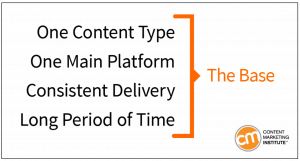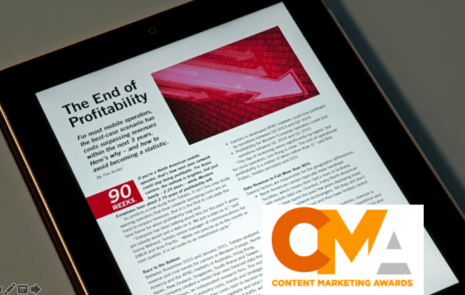
“How does content marketing build brand equity?”
Build brand equity with audience-first content.
A marketer from Capital One asked this question, one of the Top 100 Questions on content marketing.
Let’s start by unpacking what is brand equity, a brand’s perceived value. It reflects:
- Customers’ experiences with your brand
- The meaning or purpose your brand brings to life for customers.
- How differentiated your brand is from others
- Loyalty, the likelihood buyers choose your brand reflexively, without reconsidering other options.
Audience-first content builds brand equity
When you deliver content that’s driven by audiences’ needs (rather than by your brand’s promotional message), you build brand equity as it:
- Differentiates your brand clearly from others
- Deepens customer engagement with your brand
- Demonstrates that your brand puts customers first
- Defines meaning and purpose in the eyes of customers.
“More and more businesses are leveraging their content to build brand equity,” observes Pratik Dholakia, founder of Growfusely.
Content that advances your brand demonstrates that you are keeping your brand promise to customers. It reveals your brand’s purpose and meaning.
The best content marketing becomes a differentiating, valuable asset your brand is known for, as these 3 examples show.
How Patagonia builds brand equity with content
One great example of building brand equity with content marketing is Patagonia. The brand sells equipment and clothing for outdoor adventures.
Then Patagonia goes much farther, extending its brand with spot-on content marketing.
Patagonia advocates for the environmental causes its customers believe in, such as tearing down dams that harm rivers – the topic of its movie DamNation.

Patagonia also champions the preservation of public lands with its multimedia experience Defend Bear Ears.
The brand offers separate blogs to address the specific needs of rock climbing, mountain sports, and running. It even runs long-form content in its catalogs.
How Michelin builds equity with content
Creating compelling content in a commodity category is not easy. But to foodies, the Michelin Guide has become the ultimate guide for finding fine restaurants.
The Michelin Guide has been going strong since the year 1900. Its content is so good, people have been paying for the guide since 1920.
![michelin guide What 117 years of content marketing teaches [infographic]](https://crystalclearcomms.com/wp-content/uploads/2017/07/michelin-guide-1900-1-218x300.jpg)
“From an image standpoint, it certainly has helped as a halo for a tire brand. [Tires] aren’t the sexiest product … Some say that the Michelin Guide is the Bible of all dining guides,” says Tony Fouladpour of Michelin North America.
How Guinness content built $65 million in brand equity
Strong proof that your content is valuable to customers is their willingness to pay for it. Even stronger is another company’s willingness to buy your content asset for their own business.
This example literally proves that content creates brand equity – the Guinness Book of World Records. An idea hatched on a bird-hunting trip in the 1950s. The first Guinness Book was written in only 13½ weeks by twin brothers.
Its history is fascinating. The first edition appeared in 1955. By 1964, the book sold 1 million copies. It became an annual publication in 1965.

By 1974, it had outsold all other copyrighted books (but not the Bible). Diageo bought Guinness and sold off the Guinness Book of World Records for $65 million in 2001.
The franchise continues to this day, proof that great content can build millions of dollars in brand value.
Patagonia, Michelin, and Guinness all succeeded in building brand equity with content by focusing on a strong content base. The Content Marketing Institute defines a content base as one content type, on one main platform, consistently delivered for a long period of time.

Today, too few marketers focus on building a base – a missed opportunity for most brands.
Learn how to identify the white spaces where your brand can build its powerful, differentiating content base. Here’s our blog to help you get started.
When you want expert help to build your brand’s content base, we offer workshops and consulting to help you get the job done right.





